Explore the Spectacular of Naadam Festival in Mongolia
Every July, Mongolia comes alive with the vivid and exciting Naadam Festival, a centuries-old celebration of the country's rich cultural history and unwavering spirit. Known locally as "Eriin Gurvan Naadam," which translates to "The Three Manly Games," this festival showcases the country's finest athletes in wrestling, horse racing, and archery.
Naadam is not just a sports event; it is a profound expression of Mongolia's identity, reflecting traditions that date back to the era of Genghis Khan. Whether you're a history enthusiast, a cultural explorer, or an adventure seeker, Naadam offers a unique window into Mongolia's heart and soul. Ready to dive in with Tweet tours?
Mongolia
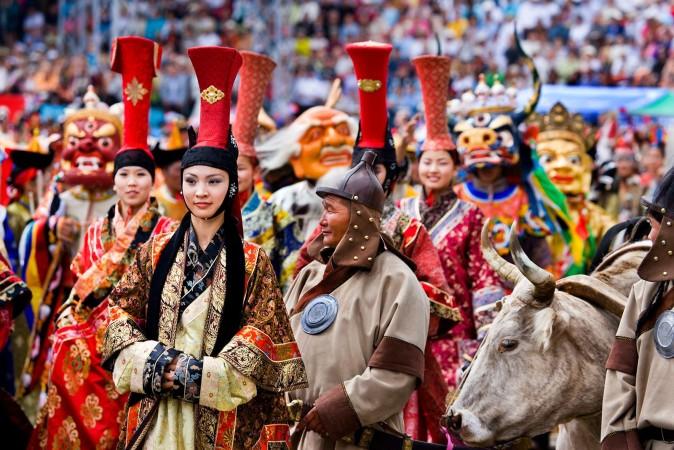
History and Significance of Naadam Festival
Ancient Origins
The roots of the Naadam Festival are deeply entwined with Mongolia's storied past. Historically, the festival's origins can be traced back to the Hunnu Empire, and it was later formalized during the reign of Genghis Khan (1162-1227). In the early 13th century, after uniting the Mongol tribes, Genghis Khan organized games to keep his warriors battle-ready during times of peace. These games were not merely recreational; they were a rigorous training ground that honed the soldiers' physical and mental prowess.
Modern Evolution
In 1921, Naadam was declared a national holiday to commemorate Mongolia's independence from Chinese rule. The Soviet era saw attempts to suppress traditional customs, but Naadam persevered, transforming into a symbol of national pride and unity. In 2010, UNESCO recognized Naadam as an Intangible Cultural Heritage of Humanity, cementing its status as a vital component of Mongolia's cultural identity. Today, Naadam is celebrated with fervor across the country, from the bustling capital of Ulaanbaatar to the tranquil, picturesque countryside.
UNESCO Recognition
The inclusion of Naadam in UNESCO's list underscores its cultural significance. According to UNESCO inscription in 2010, "Mongolian Naadam is inseparably connected to the nomadic civilization of the Mongols," emphasizing its importance in conserving traditional skills and creating communal cohesiveness. The rituals and customs observed during Naadam, from the traditional attire to the ceremonial dances, are cherished symbols of Mongolia's enduring heritage.
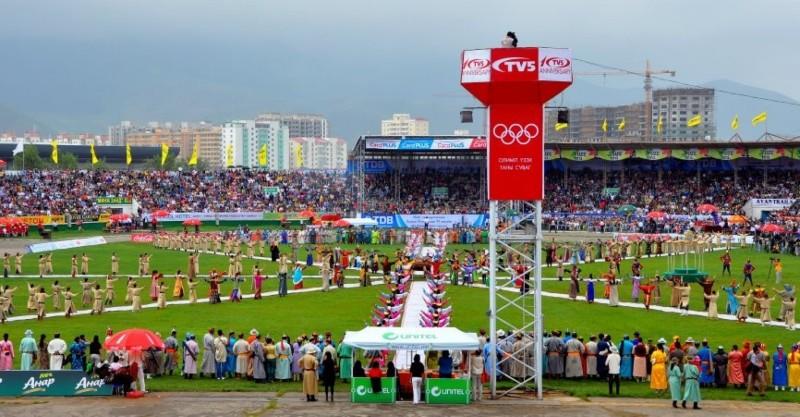
Naadam Festival - © gather
Main Events and Competitions in the Naadam Festival
Mongolian Traditional Wrestling (Bökh)
Mongolian traditional wrestling, or Bökh, is the centerpiece of Naadam and a spectacle that draws immense local and international interest. Unlike other forms of wrestling, Bökh has no weight classes or time limits. The goal is simple yet difficult: have your opponent contact the ground with something other than their feet. Matches are held in single-elimination rounds, culminating in a grand final where the victor is crowned the champion.
The wrestling uniform, consisting of a tight-fitting Zodog (collarless jacket) and Shuudag (shorts), is designed to allow maximum mobility. The titles bestowed upon winners, such as "Arslan" (Lion) and "Avarga" (Titan), carry significant prestige. Notable wrestlers often become local heroes, celebrated for their strength, skill, and sportsmanship. According to local legend, Chinggis Khan himself regarded wrestling as a critical means of keeping his soldiers fit and ready for battle.
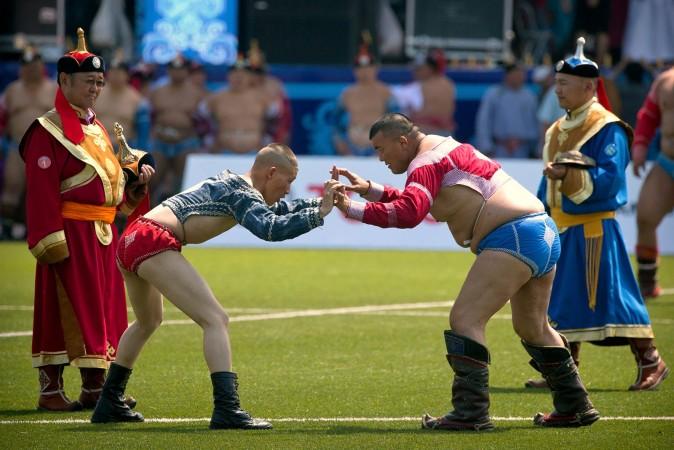
Scenes from Mongolia's annual Naadam festival - © Mark Schiefelbein/AP
Mongolian Traditional Horse Racing
Naadam's horse races are unlike any other, characterized by long distances and young jockeys. Horses compete in categories based on age, with distances ranging from 15 to 30 kilometers. The jockeys, typically children around the ages of 6 to 12, embody the bravery and skill required to navigate Mongolia's vast steppes at high speeds.
The tradition of child jockeys, though controversial by modern standards, is deeply rooted in Mongolian culture. The races test the endurance of both horse and rider, with the winning horse's sweat considered a symbol of good fortune. Spectators often rush to collect the sweat on clothes, believing it brings luck and prosperity.
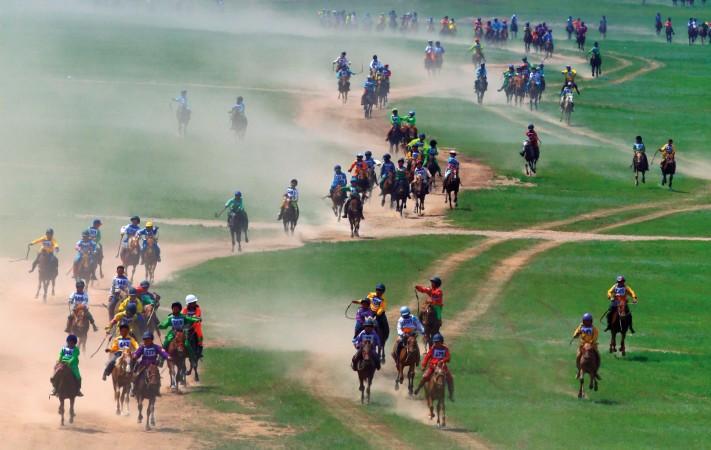
Mongolian Traditional Horse Racing - © gather
Mongolian Traditional Archery
Archery, the last sport among the “Three Manly Games” of Naadam, showcases the precision and concentration of Mongolian archers. There are three main types of archery practiced according to the research of Asia-Europe Foundation: Khalkha, Buryad, and Uriankhai, each with distinct rules and equipment.
During Naadam, competitors aim at leather targets placed at varying distances, with men typically shooting from 75 meters and women from 60 meters. The archers wear traditional Mongolian attire and follow rituals that have been passed down through generations. The competition is not just about hitting the target; it is about maintaining composure and technique under pressure. The skill of Mongolian archers is legendary, with historical records recounting feats such as hitting targets from over 500 meters away.
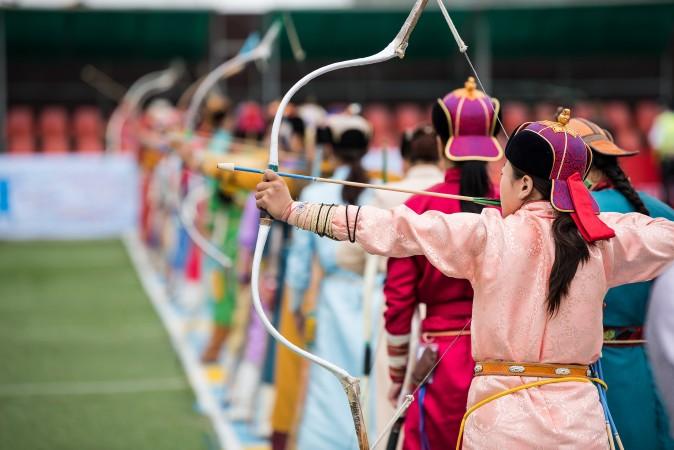
Archery contest during Naadam Festival - © Shutterstock
Cultural and Social Activities in Naadam Festival
Opening Ceremony
The Naadam Festival kicks off with a grand opening ceremony that is nothing short of spectacular. Held at Ulaanbaatar's National Sports Stadium, the ceremony features a vibrant display of traditional Mongolian culture, including music, dance, and elaborate costumes. The festivities start with a parade of athletes, each representing the three manly sports: wrestling, horse racing, and archery.
Dancers perform the traditional biyelgee dance, while singers fill the air with melodious Tuvan throat singing, known as khöömei. The highlight of the ceremony is the symbolic transfer of the Nine White Banners, representing the unity and strength of the Mongol tribes during the time of Genghis Khan. This event sets the tone for the entire festival, celebrating Mongolia's rich cultural heritage and national pride.
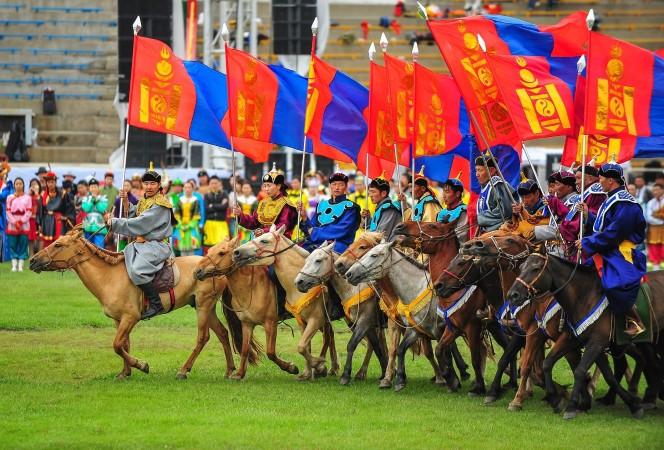
The Naadam Festival - © gather
Mongolian Traditional Attire
During Naadam, Mongolians don their finest traditional attire, known as the deel. This long, flowing gown, usually made of silk or cotton, is embellished with elaborate designs and bright colors. It is not uncommon to see families and friends wearing matching deels, a testament to their shared heritage and community spirit. The younger generation often adds a modern twist by pairing the deel with contemporary accessories like sunglasses and sneakers. Wearing a deel is not just about fashion; it is a way to connect with Mongolian history and culture.
Mongolian Traditional Dishes
Naadam is a feast for the senses, especially when it comes to food. The festival's culinary centerpiece is khuushuur, a deep-fried pastry filled with seasoned meat, usually mutton. The crispy, golden pastry is best enjoyed hot and pairs perfectly with a side of pickled vegetables. Another traditional delight is airag, a fermented mare's milk that has a slightly tangy taste and low alcohol content. It's a pleasant beverage for a hot summer day during the festival. For those looking to indulge further, there are also food stalls offering a variety of barbecued meats, dumplings, and sweet pastries.
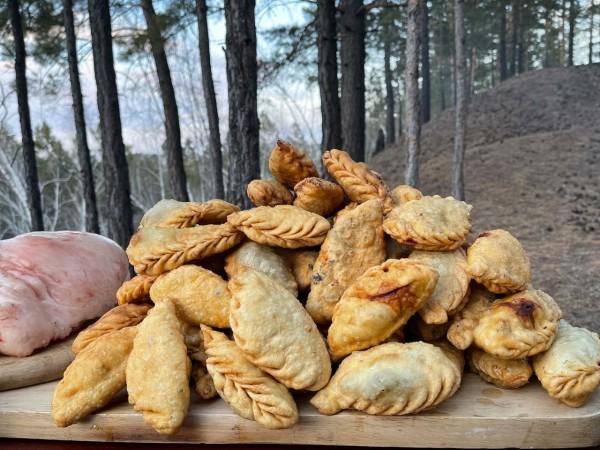
Khuushuur - © Javkhlantugs Ragchaasuren (Javkha Ara)
How to Attend Naadam Festival
Travel Tips
- Attending the Naadam Festival requires some planning, but the effort is well worth it.
- The main festivities take place in Ulaanbaatar, but smaller Naadam events are held across Mongolia.
- For international travelers, flying into Chinggis Khaan International Airport in Ulaanbaatar is the most convenient option. From the airport, the city center is easily accessible via taxi or bus.
- To experience the festival in its entirety, plan to stay in Mongolia for at least a week, allowing time to explore both the capital and the countryside.
- For a more immersive experience, consider booking one of Tweet Tours Mongolia travel packages, which often includes transportation, accommodation, and festival tickets.
Tickets and Entry
Securing tickets for the Naadam Festival, especially for the opening ceremony in Ulaanbaatar, can be challenging due to high demand. Tickets typically go on sale a few weeks before the festival and sell out quickly. It's advisable to purchase tickets as part of your tour package. Contact Tweet Tours Call Center or chat with us in the Chat Box for more details.
- Prices range from $25 for the first day to $10-12 for subsequent days.
If the tickets for the main event run out, don't worry. Many local Naadam festivals, held in smaller towns and villages, offer free entry and provide an equally rich cultural experience. These smaller festivals are less crowded and allow for closer interaction with the locals.
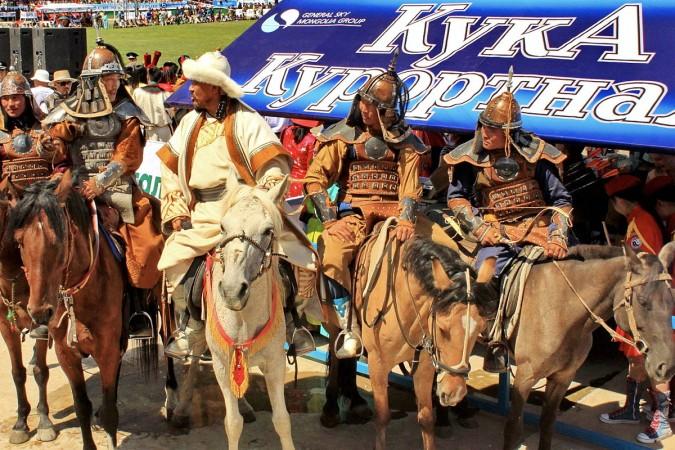
Naadam festival at the national stadium - © Marcin Konsek
Packing Tips
When packing for the Naadam Festival, consider the variable Mongolian weather.
- Summers can be warm during the day but cool in the evenings.
- Light, breathable clothing is recommended, along with a warm jacket or sweater for the night.
- Comfortable walking shoes are essential, as you will spend a lot of time on your feet exploring festival grounds.
- Don't forget sun protection, including a hat, sunglasses, and sunscreen, as well as a reusable water bottle to stay hydrated.
- A small backpack can be handy for carrying essentials, and bringing a camera or smartphone will help capture the unforgettable moments.
Cultural Etiquette
Mongolians are known for their hospitality, and respecting local customs will enhance your experience. When attending Naadam, it’s important to dress modestly and behave respectfully. If you are invited to share a meal or drink with locals, always accept with your right hand and offer a small bow of gratitude. During events, particularly in smaller villages, engaging with locals and learning about their traditions can provide deeper insights into the festival's significance. As a visitor, your interest and respect for their culture will be greatly appreciated, making your Naadam experience even more memorable.
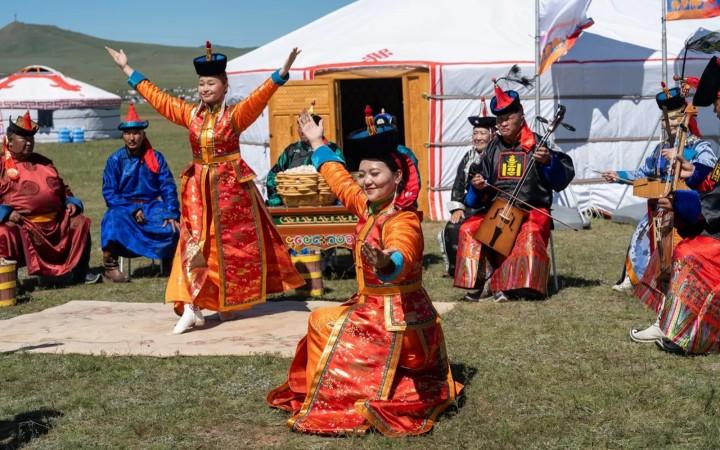
Mongolia Naadam festival - © gather
Influence on the Ethnic Community and Economy of Mongolia
The Naadam Festival significantly enhances the ethnic community's unity and boosts Mongolia's economy. Celebrated nationwide, it unites people from diverse ethnic backgrounds, fostering a strong sense of national pride. Economically, Naadam attracts thousands of tourists, generating substantial revenue for local businesses such as hotels, restaurants, and tour operators. The festival promotes local crafts, traditional foods, and cultural performances, contributing significantly to the national economy.
Cultural Challenges and Preservation Efforts of Naadam Festival
Despite its popularity, the Naadam Festival faces challenges from modernization and commercialization. Increased tourism and commercial interests risk overshadowing traditional practices. To combat this, the Mongolian government and cultural organizations are promoting traditional attire, rituals, and competitions.
UNESCO's recognition of Naadam as an Intangible Cultural Heritage of Humanity supports these preservation efforts. Local communities prioritize authenticity, especially in smaller villages. "Preserving Naadam is essential for maintaining our cultural identity," says The Diplomat News, “These efforts ensure that Naadam is a celebration of Mongolia's rich cultural history.”
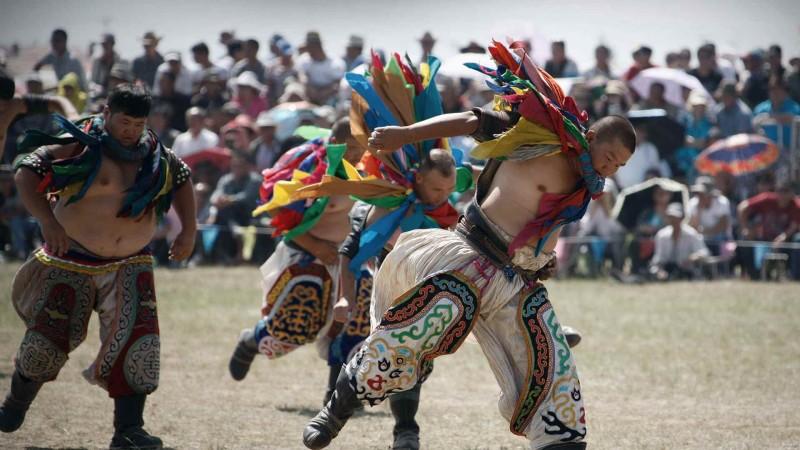
Wrestlers perform the eagle dance before a wrestling competition during the Naadam Festival in Xilin Gol League - © VCG Photo
Conclusion
The Naadam Festival is more than just a celebration; it is a vivid showcase of Mongolia's unique cultural tapestry and resilient spirit. From the exhilarating sports competitions to the colorful opening ceremonies and traditional festivities, Naadam offers an unparalleled glimpse into the heart of Mongolian culture. Whether you are a history buff, an adventure seeker, or a cultural enthusiast, Naadam promises an unforgettable journey filled with excitement, community, and profound connections. Naadam is not just a festival; it is a celebration of Mongolia's past, present, and future, a living testament to the resilience and vibrancy of its people. So pack your bags, set your sights on Mongolia, and get ready to be a part of this timeless tradition.
Articles for you

Experience Aboard The RV Indochine II - A Mekong Cruise With Tweet World Travel
The RV Indochine II is a luxury river cruise ship, offering an unforgettable journey through many attractions along the Mekong River. Built in 2017, this upscale vessel combines colonial elegance with modern conveniences to create a comfortable yet stylish environment for its crew and passengers. The ship’s intimate size makes it ideal for those seeking a more personal cruising experience while exploring Vietnam and Cambodia rich culture, scenery, and heritage. Whether you're gazing at the landscape from your private balcony or enjoying authentic local cuisine, RV Indochine II promises an exotic adventure like no other.

Witness Stilt Fishing In Sri Lanka: An Eco-Tourism Experience
Sri Lanka, renowned for its stunning beaches and rich cultural heritage, harbors a unique tradition that has captivated travelers for centuries: stilt fishing. This ancient practice, passed down through generations of coastal communities, blends artistry with necessity, offering a glimpse into a way of life intimately connected to the island's coastal rhythms. Stilt fishing in Sri Lanka isn't merely a means to catch fish; it's a cultural emblem, embodying the resilience and ingenuity of Sri Lanka's fishing communities.

Make Your Trip Stress-Free With The Tweet Trip App
Embark on your next adventure with confidence by downloading the Tweet Trip App, available for both iOS and Android. This essential travel companion allows you to view your detailed itinerary, stay connected with your tour guide and fellow travelers, receive real-time updates, and provide feedback effortlessly. With features like in-app messaging, emergency assistance, and location sharing, the Tweet Trip App ensures you travel smarter, stay connected, and enjoy a seamless, worry-free journey. Get started today and make the most of your travel experience with Tweet World Travel.

Pedal Through Paradise: Unveiling Cambodia's Hidden Gems on Two Wheels
The gentle whir of bicycle wheels mingles with the distant chants of monks as you glide past emerald rice paddies stretching to the horizon. This is Cambodia - a sensory explosion waiting to be experienced on two wheels. At Tweet Tours, we believe there's no better way to immerse yourself in the Kingdom of Wonder than by bicycle.
Cambodia isn't just a destination; it's a living, breathing tapestry of ancient wonders, natural beauty, and vibrant culture. Our carefully crafted cycling tours take you beyond the typical tourist haunts, offering a unique perspective on this captivating country. Ready to clip in and discover the magic of Cambodia? Let's ride!

Trekking in the Himalayas: A Journey Through Nepal's Majestic Peaks
The Himalayas rise from the earth like colossal guardians, their snow-capped peaks piercing the sky in a display of nature's raw power and beauty. Nepal, nestled at the heart of this mountain range, serves as the gateway to some of the most breathtaking trekking experiences on the planet. Here, the air is crisp and thin, filled with the promise of adventure and the whispers of ancient tales.
With Tweet Tours, as you set foot on these hallowed trails, you're not just a traveler - you're a modern-day explorer, following in the footsteps of legendary mountaineers and age-old traders. Each step takes you further into a world where nature reigns supreme and human resilience is tested against the backdrop of some of the world's highest peaks.
From the moment your boots touch the ground in Kathmandu, you'll feel the pull of the mountains. The bustling streets of the capital, with their sensory overload of sights, sounds, and smells, soon give way to serene mountain paths where the only soundtrack is the crunch of gravel underfoot and the distant tinkling of yak bells.

Exploring Mui Ne's Wonders: Unique Attractions & Local Dishes
Nestled along the southeastern coast of Vietnam, Mui Ne emerges as a captivating gem, blending natural wonders with cultural richness. Renowned for its stunning landscapes and unique attractions, Mui Ne beckons travelers seeking both relaxation and adventure in equal measure. Mui Ne's renowned beach dunes, bustling fishing towns, and excellent local food await exploration at every turn.
The allure of Mui Ne lies not only in its pristine beaches and crystal-clear waters but also in its diverse range of activities catering to every traveler's whims. Whether you're drawn to thrilling water sports like kitesurfing and windsurfing on its dynamic shores or seeking tranquility amidst the picturesque Fairy Stream, Mui Ne promises an unforgettable journey filled with discovery.
